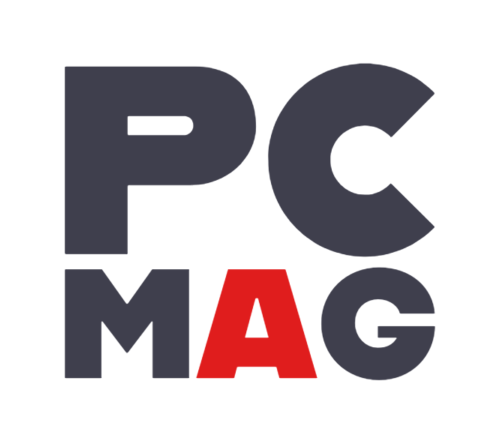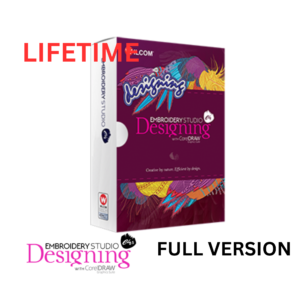Embroidery is an art form that combines creativity with technology, and the right embroidery software can make all the difference in the quality and efficiency of your projects. Whether you are a hobbyist or running a commercial embroidery business, selecting the best software is crucial to achieving stunning results. In this comprehensive guide, we will explore some of the top embroidery software options available today, their features, benefits, and tips for making the most of your choice.
Table of Contents
- Understanding Embroidery Software
- 1.1 What is Embroidery Software?
- 1.2 Why Use Embroidery Software?
- Key Features to Look For
- 2.1 User-Friendly Interface
- 2.2 Design Creation Tools
- 2.3 Customization Options
- 2.4 File Compatibility
- 2.5 Support and Resources
- Top Embroidery Software Options
- 3.1 Wilcom Embroidery Studio
- 3.2 Hatch Embroidery Software
- 3.3 Brother PE-Design
- 3.4 Janome Digitizer
- 3.5 Embrilliance Essentials
- 3.6 Ink/Stitch
- 3.7 SewArt
- 3.8 Artista Design Software
- Choosing the Right Software for Your Needs
- 4.1 Assessing Your Skill Level
- 4.2 Understanding Your Project Requirements
- 4.3 Budget Considerations
- Getting Started with Your Chosen Software
- 5.1 Installation and Setup
- 5.2 Familiarizing Yourself with the Interface
- 5.3 Exploring Tutorials and Resources
- Tips for Mastering Embroidery Software
- 6.1 Experimentation and Practice
- 6.2 Utilizing Online Communities
- 6.3 Staying Updated with Software Releases
- Conclusion
1. Understanding Embroidery Software
1.1 What is Embroidery Software?
Embroidery software is a specialized program that allows users to create, edit, and manage designs for embroidery machines. It enables users to convert artwork into stitch files that embroidery machines can read, as well as provide tools for digitizing designs, customizing patterns, and preparing files for production.
1.2 Why Use Embroidery Software?
Using embroidery software streamlines the design process, making it more efficient and flexible. It allows users to:
- Create intricate designs with precision.
- Customize existing designs with ease.
- Save time by automating repetitive tasks.
- Maintain high-quality output with minimal errors.
2. Key Features to Look For
When selecting the best embroidery software, consider the following key features:
2.1 User-Friendly Interface
A user-friendly interface is essential, especially for beginners. Look for software that has an intuitive layout and easy navigation, allowing users to access tools and features without a steep learning curve.
2.2 Design Creation Tools
Comprehensive design creation tools are crucial for digitizing. Features like drawing tools, text tools, and the ability to import various file formats enhance the design process, enabling users to create unique embroidery patterns.
2.3 Customization Options
Customization is vital in embroidery. The best software allows for extensive modifications, including color changes, stitch types, and sizing adjustments. This flexibility helps tailor designs to specific projects or client needs.
2.4 File Compatibility
Ensure the software is compatible with various file formats. This includes the ability to import designs from different software or export finished projects in formats compatible with your embroidery machine.
2.5 Support and Resources
Good customer support and educational resources are essential, especially for those new to embroidery software. Look for software that offers tutorials, forums, and customer service to assist users.
3. Top Embroidery Software Options
3.1 Wilcom Embroidery Studio
Wilcom is a leading name in embroidery software. Known for its comprehensive features, it offers advanced tools for digitizing and customizing designs.
Features:
- Extensive design library
- Vectorization tools for converting images
- User-friendly interface with powerful editing options
- Suitable for commercial and personal use
Benefits:
Wilcom’s advanced features provide users with professional-grade results, making it ideal for businesses focused on high-quality embroidery.
3.2 Hatch Embroidery Software
Hatch offers a user-friendly approach to embroidery design with robust capabilities for both beginners and advanced users.
Features:
- Auto and manual digitizing tools
- A variety of built-in fonts and designs
- Simple editing and resizing options
- Compatibility with various embroidery machines
Benefits:
Hatch’s flexibility allows users to create custom designs quickly, making it a favorite among hobbyists and small business owners.
3.3 Brother PE-Design
Brother PE-Design is tailored for Brother embroidery machines, offering powerful features for design and editing.
Features:
- Seamless integration with Brother machines
- Design layout and resizing tools
- Advanced stitch editing capabilities
- Image tracing and conversion tools
Benefits:
This software is ideal for Brother machine owners, providing tools that enhance the capabilities of their equipment.
3.4 Janome Digitizer
Janome Digitizer is designed specifically for Janome machines, providing an array of features that enhance embroidery projects.
Features:
- Easy-to-use interface with drag-and-drop functionality
- Comprehensive editing tools
- Built-in design templates and fonts
- High compatibility with Janome embroidery machines
Benefits:
Janome users benefit from a software suite that complements their machines, making design creation straightforward and efficient.
3.5 Embrilliance Essentials
Embrilliance Essentials is a versatile software option that appeals to users of all skill levels.
Features:
- Simple drag-and-drop design interface
- Font management and text editing capabilities
- Ability to merge and resize designs
- Compatible with most embroidery machines
Benefits:
Embrilliance is affordable and user-friendly, making it a popular choice for those looking to get started with embroidery software.
3.6 Ink/Stitch
Ink/Stitch is an open-source embroidery design extension for Inkscape, making it a great option for those who prefer free software.
Features:
- Supports various stitch types
- SVG-based design capabilities
- Ability to create and edit designs directly in Inkscape
- Export options for multiple embroidery file formats
Benefits:
Ink/Stitch provides a cost-effective way to access professional-level tools, perfect for users looking to experiment without a financial commitment.
3.7 SewArt
SewArt is another excellent choice for users looking for affordable and effective digitizing software.
Features:
- User-friendly interface with auto-digitizing features
- Import of various file types
- Simple editing tools for adjustments
- Ability to save designs in multiple formats
Benefits:
SewArt is particularly appealing to beginners due to its straightforward design and affordability.
3.8 Artista Design Software
Artista is known for its advanced digitizing features, making it suitable for professional users.
Features:
- Comprehensive design and editing tools
- Extensive library of pre-designed motifs and fonts
- Advanced stitch creation capabilities
- Compatibility with a wide range of embroidery machines
Benefits:
Artista provides the tools necessary for high-end design work, making it a go-to for commercial embroidery businesses.
4. Choosing the Right Software for Your Needs
4.1 Assessing Your Skill Level
When selecting embroidery software, consider your experience level. Beginners may benefit from user-friendly options like Embrilliance or SewArt, while advanced users might prefer Wilcom or Artista for their extensive features.
4.2 Understanding Your Project Requirements
Identify the types of projects you plan to undertake. If you’re primarily working with logos, software with robust vectorization capabilities, like Wilcom or Brother PE-Design, may be more suitable.
4.3 Budget Considerations
Embroidery software can vary significantly in price. While some options are free or affordable (like Ink/Stitch), others may require a more substantial investment. Assess your budget and choose software that offers the best value for your needs.
5. Getting Started with Your Chosen Software
5.1 Installation and Setup
Once you’ve chosen your software, follow the installation instructions provided by the manufacturer. Most software comes with a straightforward setup process, guiding you through the necessary steps.
5.2 Familiarizing Yourself with the Interface
Take time to explore the interface and available features. Understanding the layout and tools will enhance your efficiency when creating designs.
5.3 Exploring Tutorials and Resources
Utilize tutorials, user guides, and online resources to deepen your understanding of the software. Many manufacturers offer free resources to help you get started.
6. Tips for Mastering Embroidery Software
6.1 Experimentation and Practice
The best way to become proficient is through hands-on experience. Experiment with different tools and techniques to discover what works best for you.
6.2 Utilizing Online Communities
Join forums and social media groups related to embroidery software. These communities can provide invaluable support, tips, and inspiration from fellow users.
6.3 Staying Updated with Software Releases
Keep an eye on updates and new features released by the software manufacturer. Staying current can enhance your experience and provide access to new tools.
7. Conclusion
Choosing the best embroidery software can elevate your projects from ordinary to extraordinary. With a variety of options available, it’s essential to consider your skill level, project requirements, and budget when making your selection.
Whether you opt for professional-grade tools like Wilcom and Artista or more user-friendly options like Embrilliance and SewArt, the right software will empower you to unleash your
creativity and produce stunning embroidery designs.
Invest time in learning and mastering your chosen software, and watch your embroidery skills flourish. Happy stitching!




